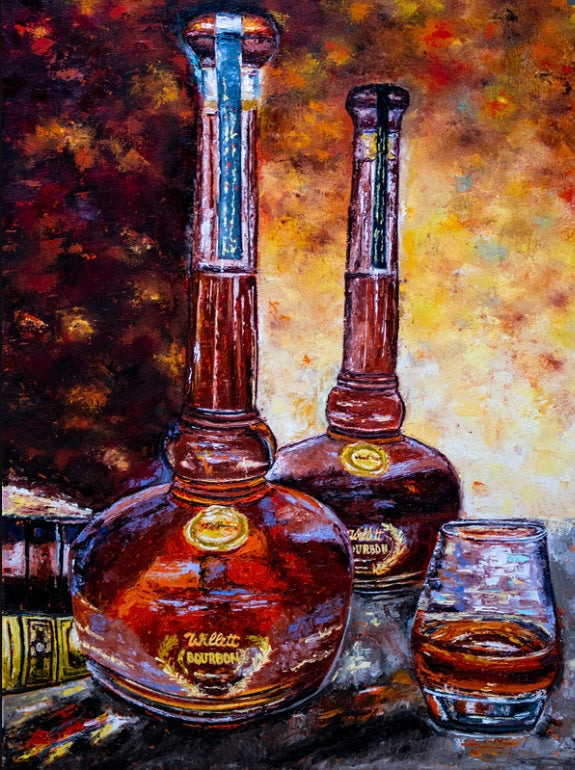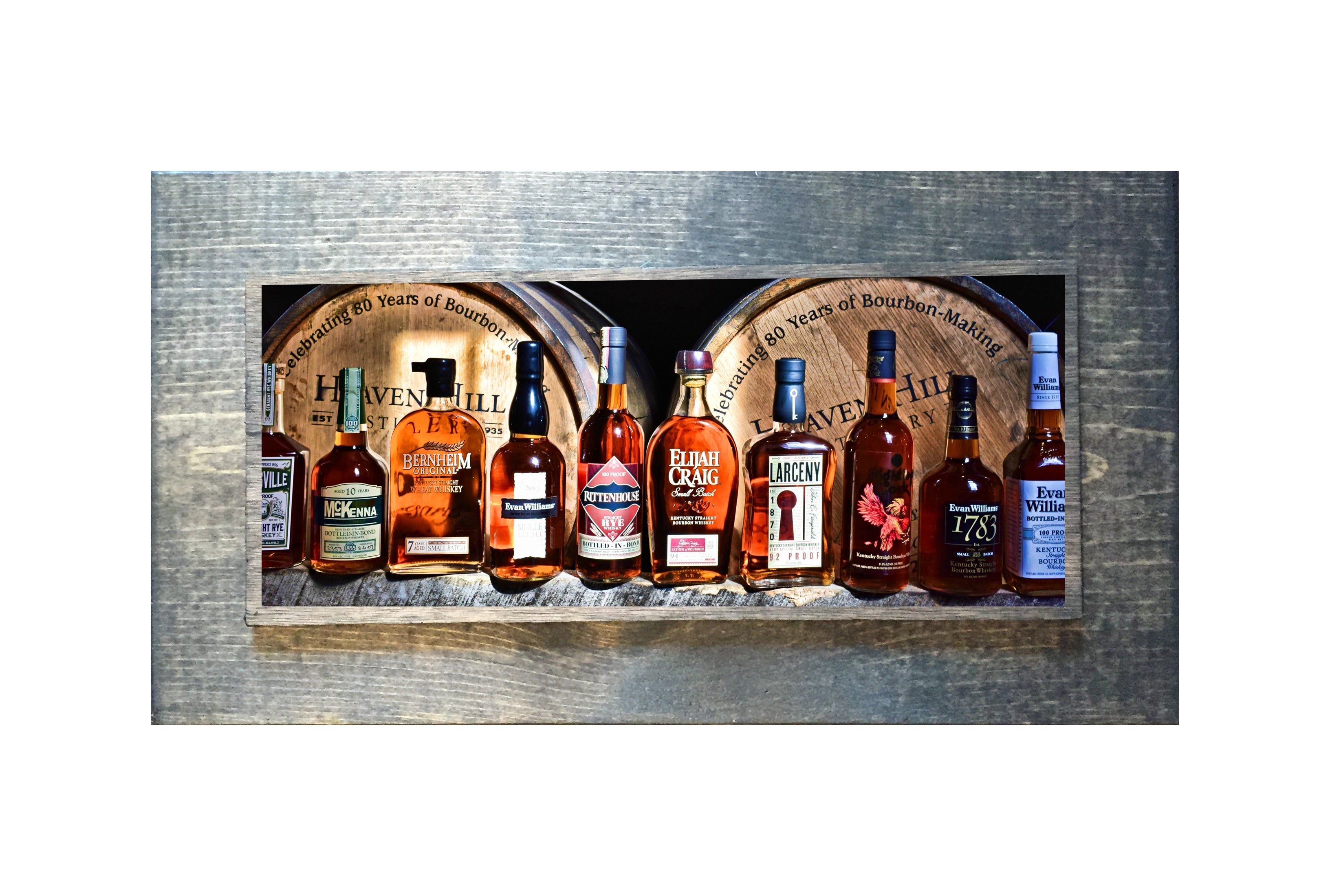Limited Edition: Discover Exclusive Bourbon Art Parts for Collectors
Limited Edition: Discover Exclusive Bourbon Art Parts for Collectors
Blog Article
The Importance of Whiskey Art in Celebrating Heritage and Craftsmanship in the Beverage Industry
The complex connection between scotch art and the celebration of heritage and workmanship within the beverage sector can not be overemphasized. With thoughtfully developed containers and labels, whiskey brands envelop their historic roots and the artisanal abilities that define their manufacturing techniques.
The Historic Roots of Whiskey
At the heart of whiskey's appeal lies a rich tapestry of historic roots that map back to old human beings. The beginnings of bourbon can be connected to the purification techniques of the Sumerians and Babylonians around 2000 BCE, where very early forms of fermented grain beverages began to emerge. It was in the Center Ages that the art of distillation advanced substantially, particularly in Ireland and Scotland, leading to the production of whiskey as we understand it today.
The term "scotch" itself originates from the Gaelic word "uisce beatha," indicating "water of life." This phrase emphasizes the cultural importance of whiskey in Celtic societies, where it was usually related to rituals, events, and public bonding. By the 15th century, purification ended up being an identified craft within reclusive neighborhoods, leading the way for the facility of lawful distilleries.
As trade courses expanded, whiskey's appeal expanded, transcending regional boundaries and recording the passion of connoisseurs worldwide. Limited Edition. This historical trip mirrors not just the craftsmanship behind scotch manufacturing however additionally its important role in cultural and social contexts, marking it as a considerable drink throughout history
Artistic Expression in Branding
Bourbon branding stands as a compelling junction of creativity and business, where visual identity plays a critical duty fit customer perception. The aesthetics of whiskey tags, packaging, and marketing products reflect not just the brand's story but additionally its core values and heritage. Via artistic expression, distilleries share a story that reverberates with customers, stimulating feelings and stimulating links.
Making use of shade, typography, and imagery in branding serves to set apart items in a saturated market. Traditional motifs might stimulate a feeling of credibility and workmanship, while modern designs can symbolize innovation and forward-thinking. This tactical artistic direction enhances brand name recognition and commitment, allowing customers to create a personal relationship with the whiskey they choose.
In addition, imaginative expression in branding often acts as a party of regional heritage. Distilleries regularly integrate neighborhood signs or historic recommendations right into their styles, producing a local color that welcomes customers to take part in a wider social experience. Ultimately, the creativity behind bourbon branding not just boosts aesthetic appeal however additionally enhances the total narrative of the brand, promoting a much deeper appreciation for the workmanship and heritage embedded in each container.
Craftsmanship in Container Style
The artistry evident in whiskey branding extends beyond aesthetic identity to encompass the craftsmanship entailed in container design. Each container functions as a vessel not simply for the spirit within, however likewise for the tale it informs regarding its custom, high quality, and beginning. The design process needs careful interest to detail, as elements such as closure, form, and material contribute significantly to the general assumption of the bourbon.
Craftsmanship in container style includes choosing high-quality glass that can boost the bourbon's color and clearness, while additionally supplying a tactile experience for the consumer. The shape of the container have to be both visually enticing and useful, commonly mirroring the heritage of the brand. Lots of distilleries choose distinct shapes or printed logo designs that stimulate click to read more a sense of credibility and background.
Furthermore, the tag layout and typography play a vital duty in connecting the brand's narrative. Whiskey Art. A well-crafted bottle not just captivates the consumer's eye however also reinforces the brand's dedication to quality and practice. In this method, the workmanship of container layout comes to be an essential facet of the bourbon experience, merging creativity with a profound respect for heritage
Social Significance of Bourbon Art
Commemorating practice and craftsmanship, the cultural significance of bourbon art goes beyond mere visual appeals, linking with the historic and social stories of the areas from which it stems. Each container works as a canvas, illustrating the distinct tales, folklore, and practices that have formed regional whiskey-making techniques. The detailed layouts typically mirror the heritage of the distillers, integrating symbols and themes that resonate with the culture and worths of their areas.

Furthermore, scotch art plays an essential role in public gatherings and events, serving as a concrete web link between people and their shared experiences. By valuing the artistry in scotch product packaging, consumers cultivate a much deeper understanding and respect for the craft, eventually improving their enjoyment of the drink itself.
Modern Trends in Bourbon Presentation
In recent times, the discussion of bourbon has developed to show modern preferences and trends while still honoring standard workmanship - Bourbon Art. Distilleries are progressively concentrating on visual components that enhance the overall drinking experience, connecting the space in between heritage and modernity
Cutting-edge container designs have emerged, typically integrating lasting products and imaginative tags that inform engaging tales. Several brand names currently collaborate with local artists, infusing their products with unique visual expressions that resonate with customers. In addition, limited-edition launches are often packaged in collectible containers, adding worth and appeal for lovers.

Verdict
In conclusion, whiskey art works as an essential avenue for expressing the heritage and craftsmanship intrinsic in the drink sector. Via intricate branding, innovative bottle styles, and culturally considerable creative components, bourbon brand names properly recognize their traditions and get in touch with consumers. This artistic narrative not only elevates the appreciation of whiskey but also reinforces community identity and pride amongst manufacturers. Inevitably, bourbon reference art plays an sites essential duty in preserving and commemorating the abundant social tapestry of whiskey-making.


Workmanship in bottle layout entails choosing premium glass that can enhance the bourbon's shade and clarity, while additionally supplying a tactile experience for the customer. In this method, the craftsmanship of container layout comes to be an important aspect of the bourbon experience, merging virtuosity with a profound respect for heritage.
In final thought, whiskey art offers as an important avenue for sharing the heritage and craftsmanship inherent in the drink industry.
Report this page